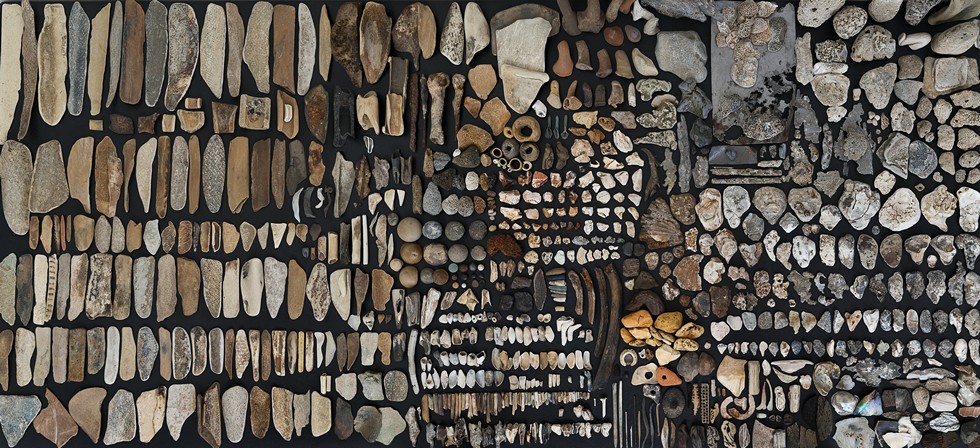
The exhibition
How do artists incorporate fundamental knowledge into their visual and theoretical research?
What kind of discourse about the world of innovation and technology are they elaborating?
How does their approach allow us to complete or broaden our understanding of the world?
Olivia Guigue inaugurates the cycle of three monographic exhibitions that the Art Sciences gallery is dedicating to the actualisation of matter in the practice of contemporary artists. Entitled "Tamesiology, study of a museum of futures", her exhibition immerses us in a poetic and scientific classification of the recent geological formations that line the banks of the Thames.
Reflecting on archaeology and geology in the age of the Anthropocene, the artist imagines the future of our waste : plastics become pseudominerals and electronic waste takes on the appearance of artefacts from an ancient civilisation. Borrowing from scientific methods of classification, she presents us with part of her own collection, the fruit of methodical gathering as she wanders along the river. Thus, we discover that plastic has become a constituent element of the geological layers that settle in the bed of the Thames, access to which is facilitated by the low tides that punctuate its flow. From all the materials collected, Olivia Guigue has identified seven major groups that constitute a cartography that is both analytical and aesthetic of the relationship between our civilisation and the river that flows through it.
This speculative classification encompasses natural materials specific to the region and natural materials imported through maritime trade, as well as transformed and artificial materials from various eras, ranging from slag from metallurgy to the most recent electronic objects. The classification is to be read from bottom to top, echoing the principle of soil sedimentation, with the most recent elements towards the top.
The exhibition features a series of display cases inviting us to discover these collected fragments, while the gallery's walls show various photographs of these strange materials. Our gaze wanders constantly between recognisable elements (a mobile phone, printed circuits, etc.) and shapes whose origin would be impossible to determine without the artist's indications. The back of the space is occupied by a video projection that shows us, like a giant pupil, the eye of a microscope moving slowly through samples of pseudoambers, specimens that bear an unsettling resemblance to amber.
Through these fragments of the recent world, microscopic on a geological scale, we discover the immense impact that our civilisation is producing on its ecosystem. Olivia Guigue offers us a critical and paradoxical reading: by using all the museum codes that confer value and preciousness on objects from the past, she urges us to change our point of view on the subconscious of our contemporary societies.

Olivia Guigue
Olivia Guigue has developed an experimental, poetic and documentary approach to photography, which she enriches by gleaning traces, materials and found objects. Her approach highlights what is out of sight or ignored, offering viewers a chance to reflect on themselves. With the multidisciplinary project Tamesiology, she focuses on the sediments along the banks of the River Thames in London, and combines collections of objects, photography and classification.
Right from the start of the project, in 2018, her 'pseudominerals' won first prize of the ALife Art Award and an excerpt from the Tamesiology collections was exhibited at the Miraikan (Tokyo Museum of Science and Innovation) during the international Artificial Life conference. Olivia Guigue's first solo exhibition in the UK (2021, SE8 Gallery), the fruit of a long residency during the lockdowns, was held not far from the shores of Greenwich, where the artist was able to pursue her research in situ. The exhibition was accompanied by a publication relating her epistolary exchanges with the exhibition curators during this period.
Visit her website

